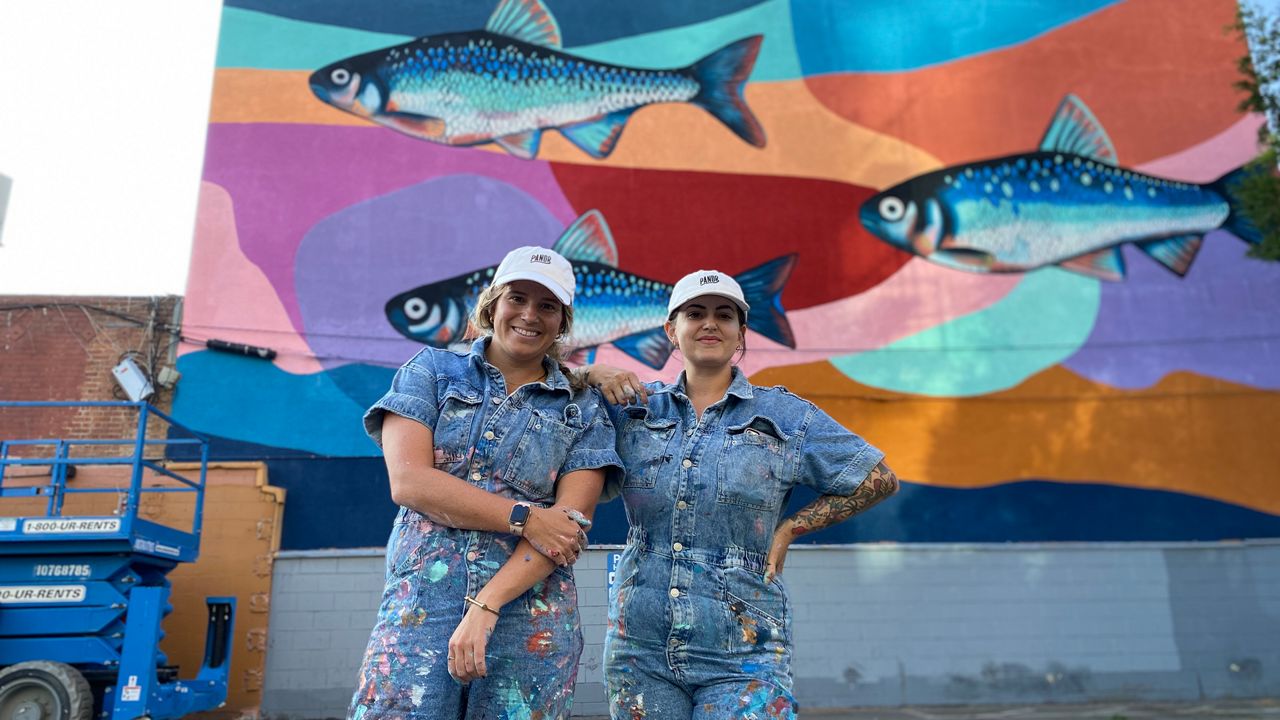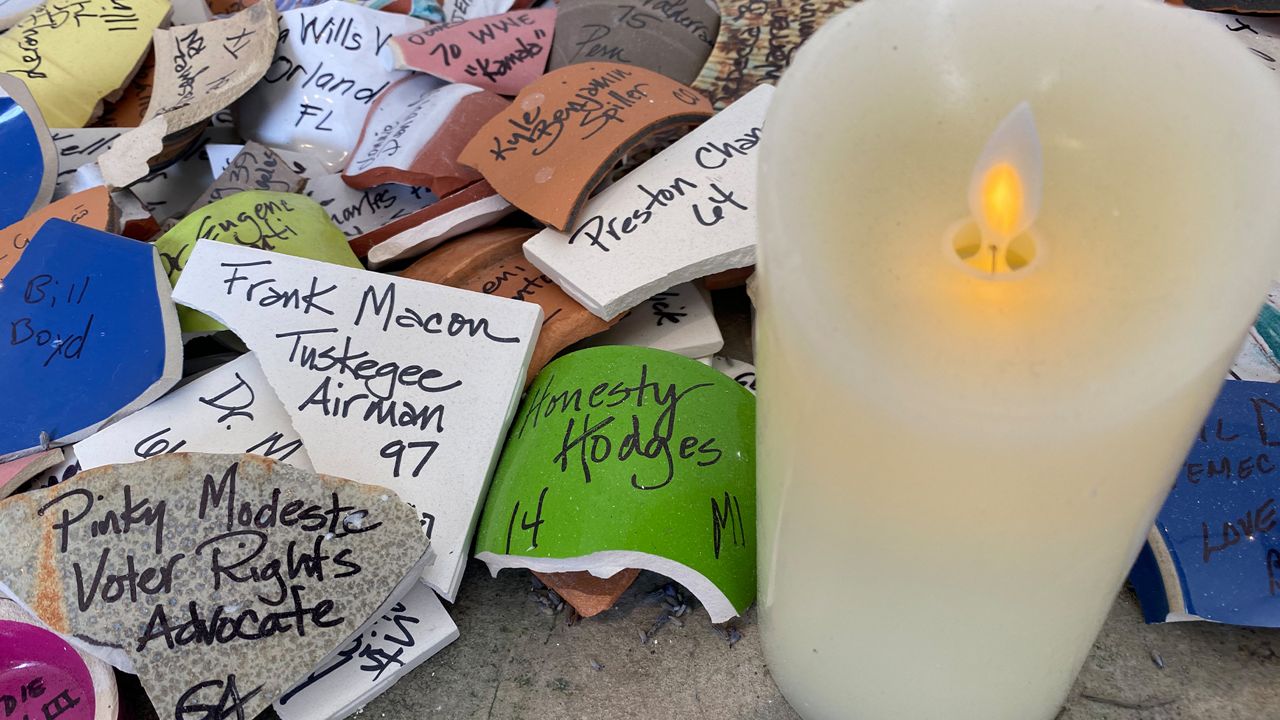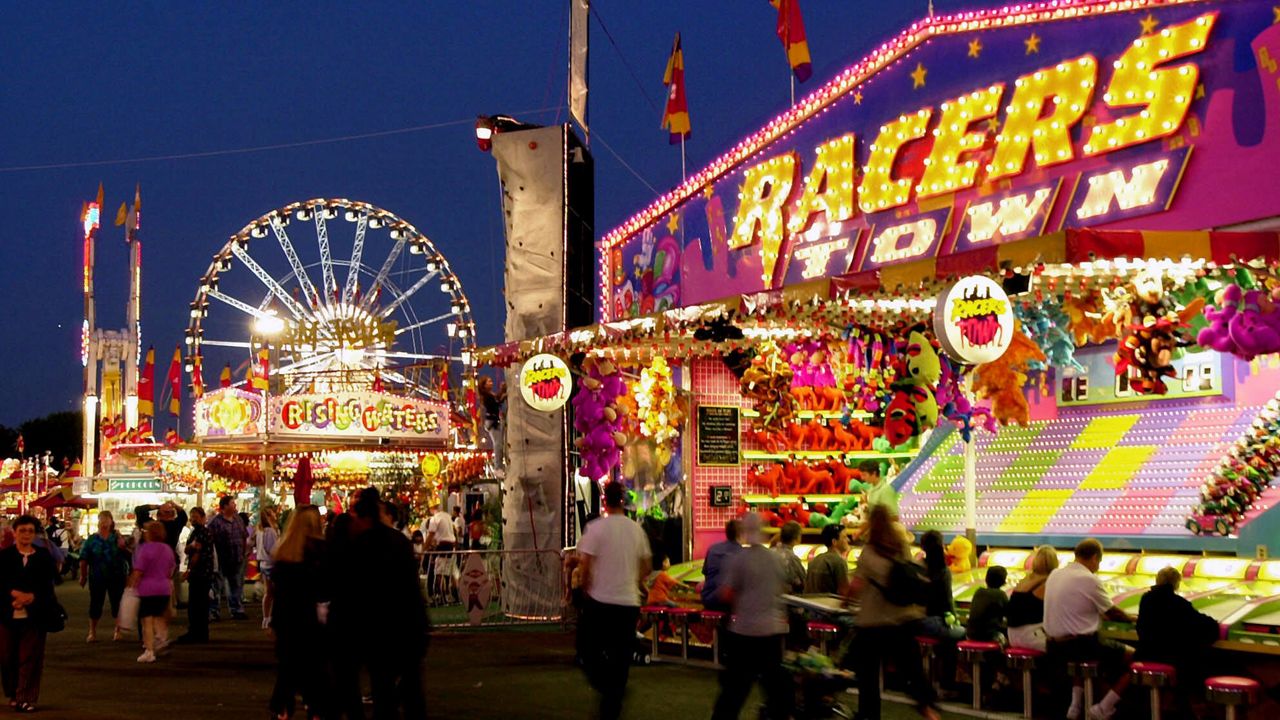SANTA ANA, Calif. -- Art is often a representation of who someone is.
For Santa Ana native and graffiti artist Kimberly Duran -- who goes by Schmi -- it’s the art form of graffiti itself that allows her to represent the culture of the city she’s from.
“When it comes to public art we do have the chance to speak for a lot of other people,” said Schmi.
She and her partner Bud Herrera -- who goes by Delt -- are two of the biggest names in a growing Santa Ana mural scene. One of their recent works was actually commissioned by the city -- demonstrating just how far the art form -- once considered vandalism -- has come.
“‘Graft’ has always been related to being really controversial with crime and grime. So it’s kind of good to be like a platform to break away from the stereotype and now people can associate it more with the creativity and see past that negative force of just always being alley street art,” said Delt.
Their studio in the East End gives you an idea of the power of graffiti. Unlike paint brushes, spray cans provide an instant gratification, taking the art from concept to reality.
“A little bit of paint and a can-do attitude. That’s all we need,” Delt said.
And the loudness of their work speaks volumes, both visually and viscerally. Graffiti’s roots are in cities, and that is reflected in the way artists paint. Herrera is from L.A. himself and that native connection allows he and Duran’s work to speak to their communities, in a way other art forms might not be able to.
“People that paint in their own community as well, it’s kind of cool because you can take some of the elements from around there like the people and your everyday stuff and you understand and can tie everything together. It’s makes them feel welcome because they appreciate it and kind of understand what you’re catering to,” said Delt.
Santa Ana is so invested that there‘s even money in commission grants to fix vandalized work, enabling these artists to maintain the identities they’ve worked so hard to represent.
“I want to be a pioneer and continue to create and build my body of work until my hands fall off,” said Schmi.











